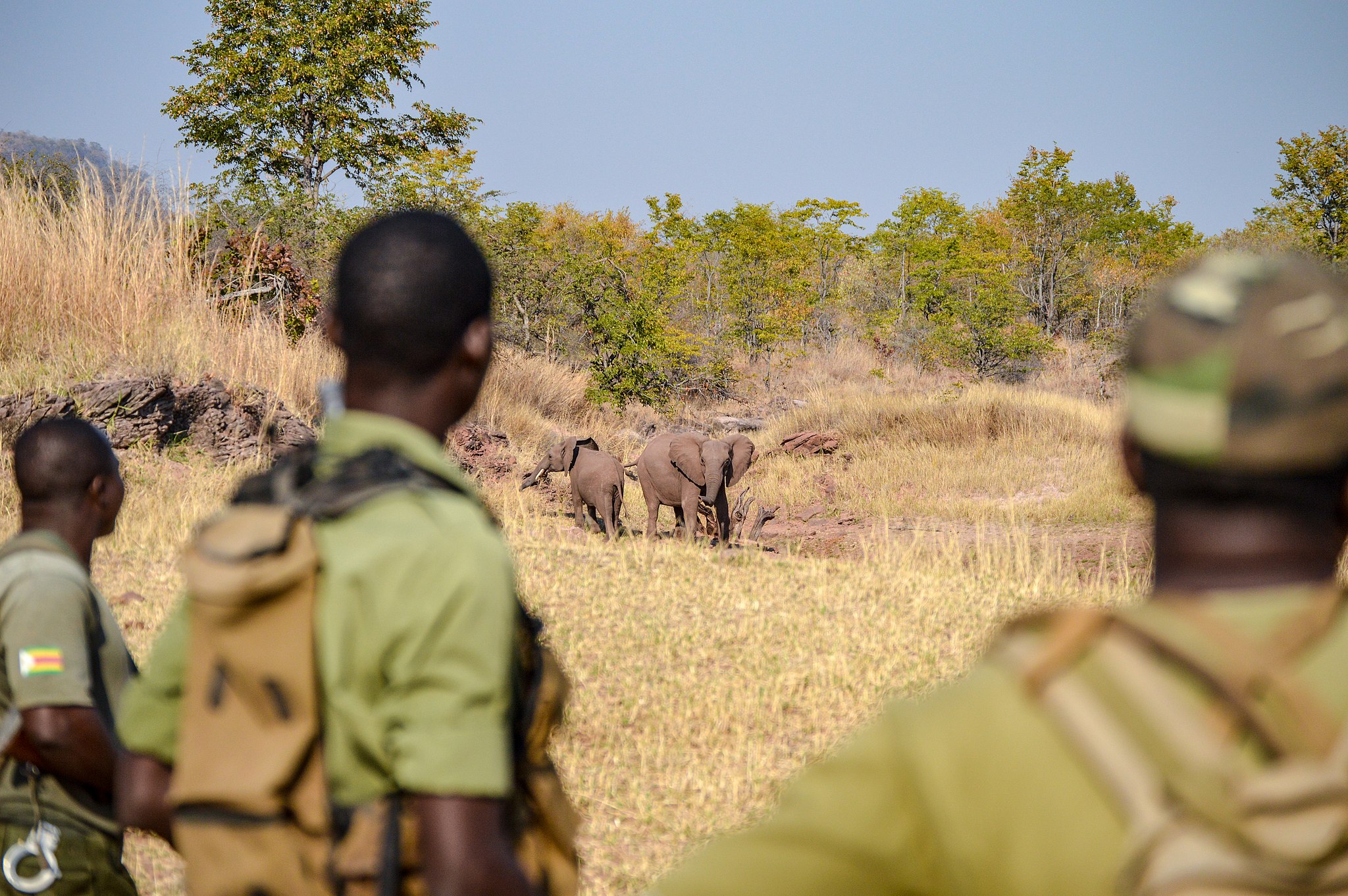The Bumi Hills Anti-Poaching Unit out on patrol protecting elephants in Zimbabwe from poaching. Bumihillsfoundation, CC BY-SA 4.0, via Wikimedia Commons.
By the end of the 19th century, the number of red kite individuals in the UK was in the single figures. Now, over 100 years later, there are thought to be at least 1,000 breeding pairs in the Chilterns alone. In recent years we are seeing more and more success; bringing back wildlife from the brink of extinction due to a range of conservation efforts.
Bolstered by inventories such as the IUCN (The International Union for Conservation of Nature) Red List of Threatened Species and Green List of Protected and Conserved Areas, conservation action for threatened species has gained both increased attention and measures to evaluate its success. Looking at current conservation programmes, we can ask what they do that is so effective and how we can learn from them to protect biodiversity in the future—particularly in the face of increased human disruption to natural systems.
Mammals are a group of vertebrate animals that nowadays can be found on land, in the sea, or in the sky. Having evolved from a reptilian ancestor around 225 million years ago, the radiation of mammals began largely as a result of the Cretaceous–Paleogene (K–Pg) extinction event. This event, known popularly as ‘the asteroid that killed the dinosaurs’, led to the extinction of approximately ¾ of plant and animal species on earth. However, mammals survived in disproportionally larger numbers compared to other groups and as such were able to radiate. So began the “age of mammals”, where population numbers rose, and new species emerged.
However, with the spread and booming population of humans across the globe, nature has increasingly been bearing the brunt. In data we see increased human activity associated with falling population sizes of wildlife, with humanity’s early spread spelling the demise for most mammalian megafauna.
Overhunting and habitat loss have pushed formerly abundant species to the brink of extinction—and often over the edge. For conservation to be effective, these two pressures must be tackled and overturned.
While hunting can be performed in a sustainable way that allows populations to recover over time, competition in human markets often drives for overexploitation. Such competition drove the maritime fur trade from 1785 to the 1840s, leading to sea otters becoming locally extinct in many parts of the Northeast Pacific. However, 1911 saw the world’s first international wildlife conservation treaty: The International Fur Seal Treaty. This included protections for sea otters by outlawing open-water hunting, resulting in increases in population since[1].
Such protection schemes laid the groundwork for the regulations seen in place today across much of Europe; the Bern Convention and CITES (the Convention on International Trade in Endangered Species of Wild Fauna and Flora). Quotas rather than bans have also seen success, for example the 1981 hunting quotas on brown bears in Sweden largely drove the recovery of the species. Such bans and quotas speak to the promise of conservation strategy, allowing regulated activity to protect threatened populations of wildlife.

Growing human populations have also led to the expansion of human settlements into natural land for agriculture or housing. We have lost an estimated 1/3 of global forest cover from 10,000 years ago, with half of this loss in the last century alone. Habitat loss leads to species extinctions, such as the extinction of the Formosan Clouded Leopard of Taiwan in 2013.
However, conservation programmes have played an important part in stemming this habitat loss to facilitate population growth. Logging of natural forests in Taiwan was halted in 1991, resulting in regeneration of natural habitat. In other areas of the world, protected area schemes have been effective for slowing forest loss over time, for example on the island Java where deforestation rates have decreased from 2.2% pre-2000 to 0.5% post-2007. Such trends show the potential to turn the tide on otherwise increasingly pressured populations with protection schemes important for both proactive and reactive responses.
Conservation impacts can also have important consequences for the wider ecosystem. One example is the reintroduction of the sea otter in the Northeast Pacific, which facilitated shifts away from the sea urchin dominated rivers in Canada back to kelp forests.
As such, wildlife diversity stands to gain from conservation, where the impacts are not limited to those species directly targeted by action.
Conservation programmes have advanced greatly and seen large success in recent years. This provides optimism for the future of wildlife diversity, and in our ability to restore nature. However, such optimism should not allow us to become complacent in the ongoing need for protection. Conservation cannot always recover that which is lost. Some habitats are too degraded, and some populations too small. Further, we cannot be sure that reintroductions and population recovery will shift the wider ecosystem to the state that it was once before.
Reliance on conservation solely as a reactionary measure following loss is misguided. Proactive measures to protect species are essential, especially since nature is inherently complex and there is no certainty of reviving what has already been lost.





